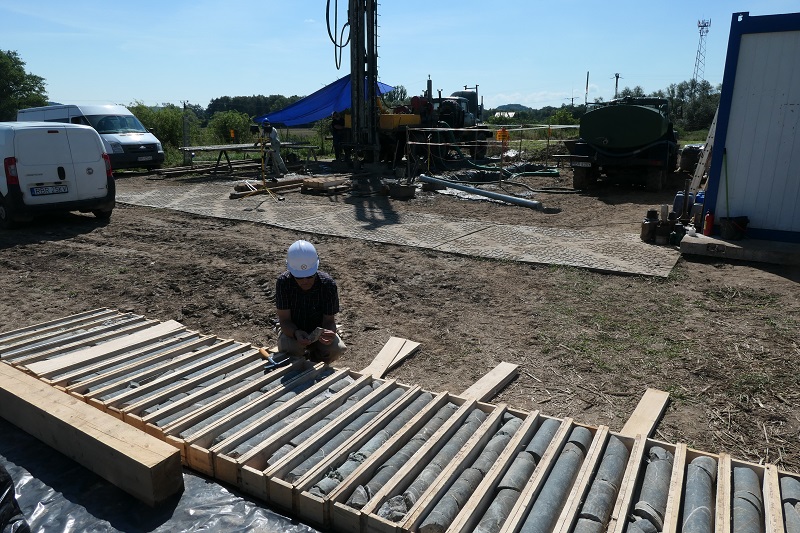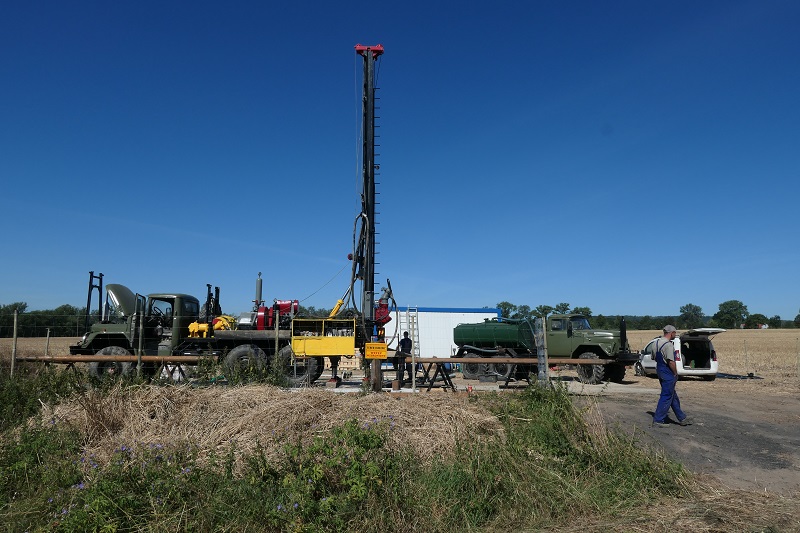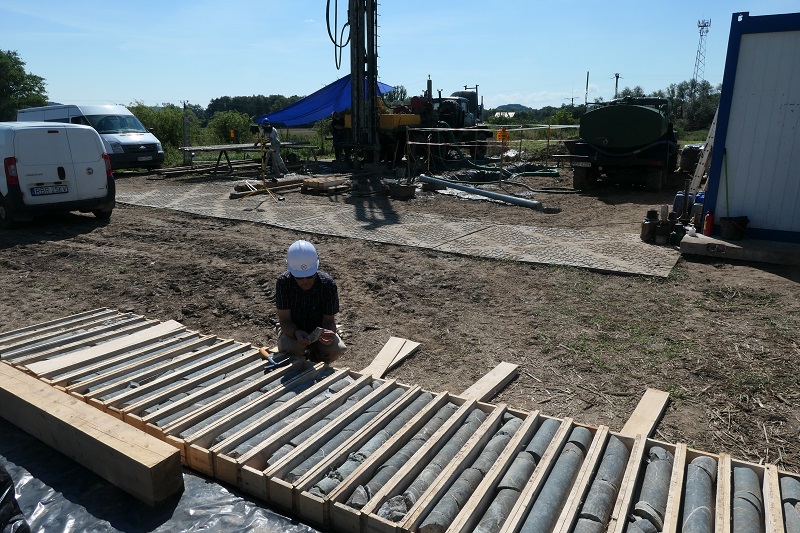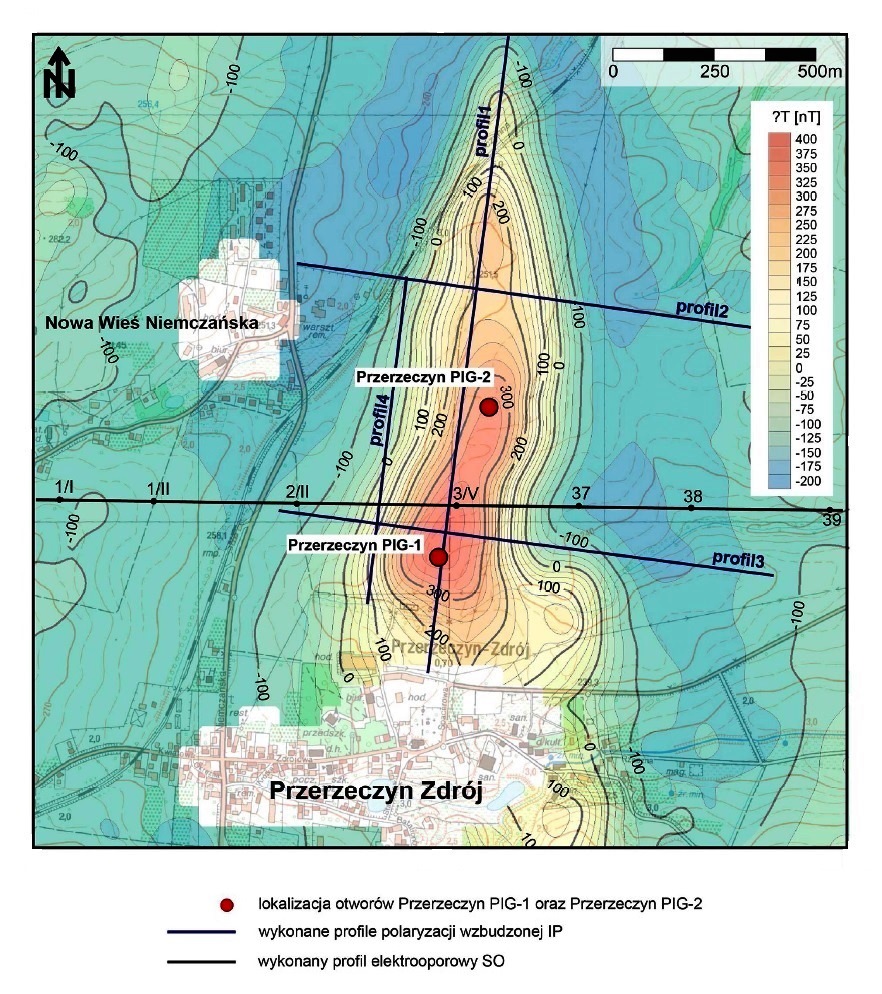 The Polish Geological Institute – National Research Institute (PGI-NRI) is conducting research on the magnetic anomaly in the area of Przerzeczyn Zdrój (Lower Silesian voivodship). In October 2020, drilling of boreholes with whole core profiles to the depth of 250 meters (Przerzeczyn PIG 1 and Przerzeczyn PIG 2) was completed.
The Polish Geological Institute – National Research Institute (PGI-NRI) is conducting research on the magnetic anomaly in the area of Przerzeczyn Zdrój (Lower Silesian voivodship). In October 2020, drilling of boreholes with whole core profiles to the depth of 250 meters (Przerzeczyn PIG 1 and Przerzeczyn PIG 2) was completed.
The core samples will now undergo detailed laboratory tests. Their main objective is to answer the question whether the anomaly can be associated with the occurrence of significant ore mineralization for an economic deposit.
The area between Nowa Wieś Niemczańska and Przerzeczyn Zdrój has been of interest to geologists for a long time. The basis for today's work and the source of information about the anomaly is the geological-geophysical interpretation of the photo of the total magnetic field of the Earth in the area of the Sudetes and their foreground, on which PGI-NRI had worked in 2013-2016.
In 2018, IP excited polarization profiling was planned and conducted as part of a research project funded by the National Fund for Environmental Protection and Water Management. A total of 2 km of profiling was done. These measurements allowed for an interpretation of the probable geological structure of the anomaly’s area, including the depth and thickness of overlying weathered complex, prospective mineralization and older bedrock.
Based on the obtained results of geophysical work and analysis of archival geological data, locations for drilling two 250 m reconnaissance boreholes were selected.
Map of ∆T anomalies of the total intensity of the Earth's magnetic field (Ihnatowicz et al., 2016) and locations of the reconnaissance boreholes
The geologic work plan for the Przerzeczyn PGI 1 and Przerzeczyn PGI 2 reconnaissance drill holes reads: "In terms of intensity, dimensions and alignment, the Przerzeczyn Zdrój anomaly is a northern continuation of anomalies associated with Szklarskie Hills serpentinite outcrops, known for nickel ore mineralization in weathered material above the serpentinites, as well as occurrences of magnesite and semi-precious stones (chrysoprase, onyx, opal). In the area of Przerzeczyn Zdrój itself, the serpentinites were confirmed to be at the depth of 80 m by one archival borehole. Further to the north, however, there are no data on this subject. There is a probability of a hidden serpentinite body and nickel-bearing weathered material, as well as magnesite and platinum-group element veins occurring there.


In order to explain the magnetic anomaly two whole-core boreholes, Przerzeczyn PIG-1 and Przerzeczyn PIG-2 were drilled
Can the anomaly be associated with the prospect of ore mineralization of economic significance? The answer to this question will now be provided by geochemical, petrographic and mineralogical analyses of approximately 100 samples obtained from both boreholes. Detailed results, according to the task schedule, are expected in late 2021.
The Fore-Sudetic Block is one of the most prospective areas in Poland in terms of possible metal ore deposits, therefore further research activity should be planned in this area.
Text: Krystian Lisiak
Photos: Adam Ihnatowicz















 PGI-NRI offer
PGI-NRI offer Mineral resources of Poland
Mineral resources of Poland  Oil and Gas in Poland
Oil and Gas in Poland 




 Subscribe to RSS Feed
Subscribe to RSS Feed